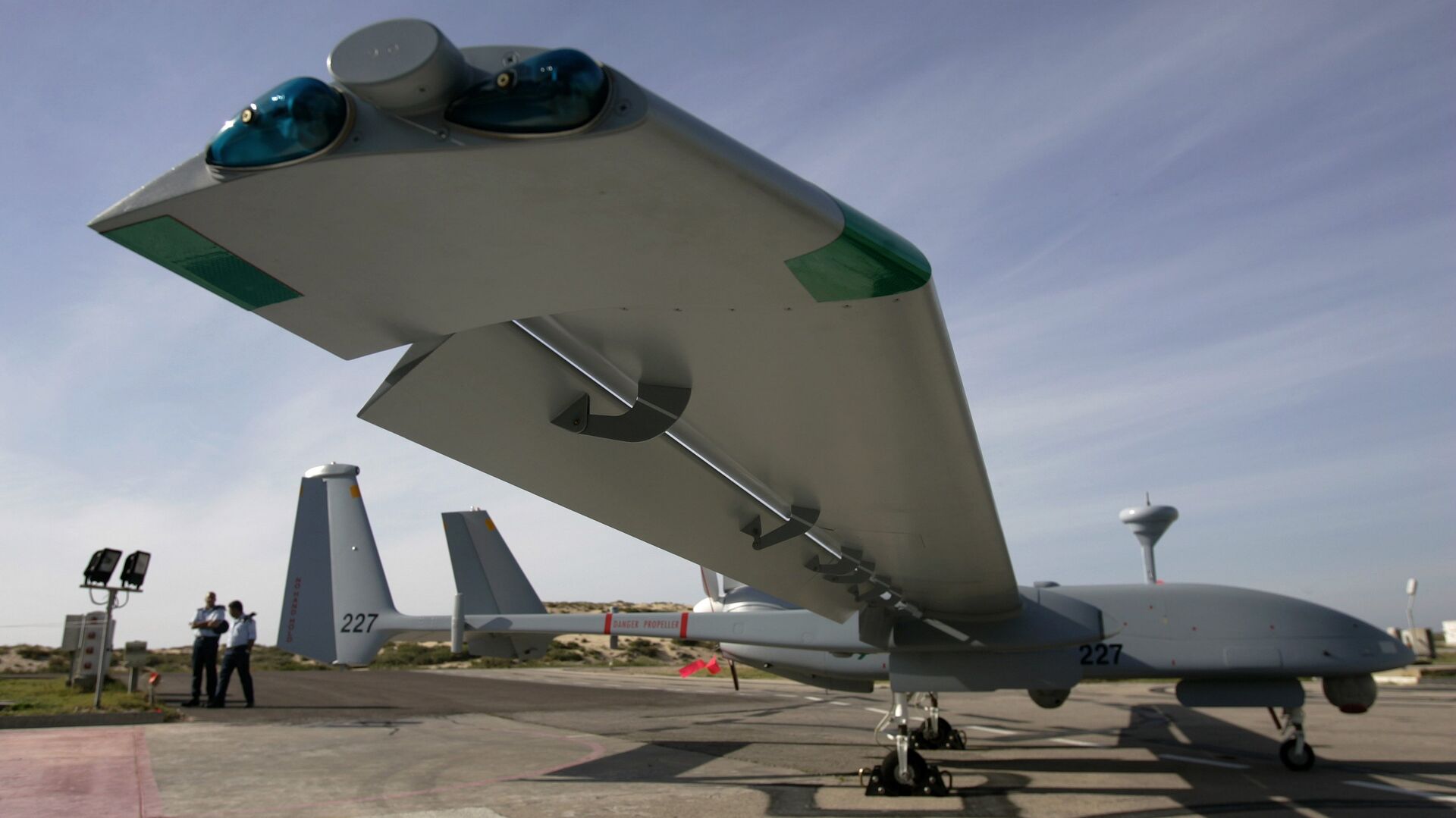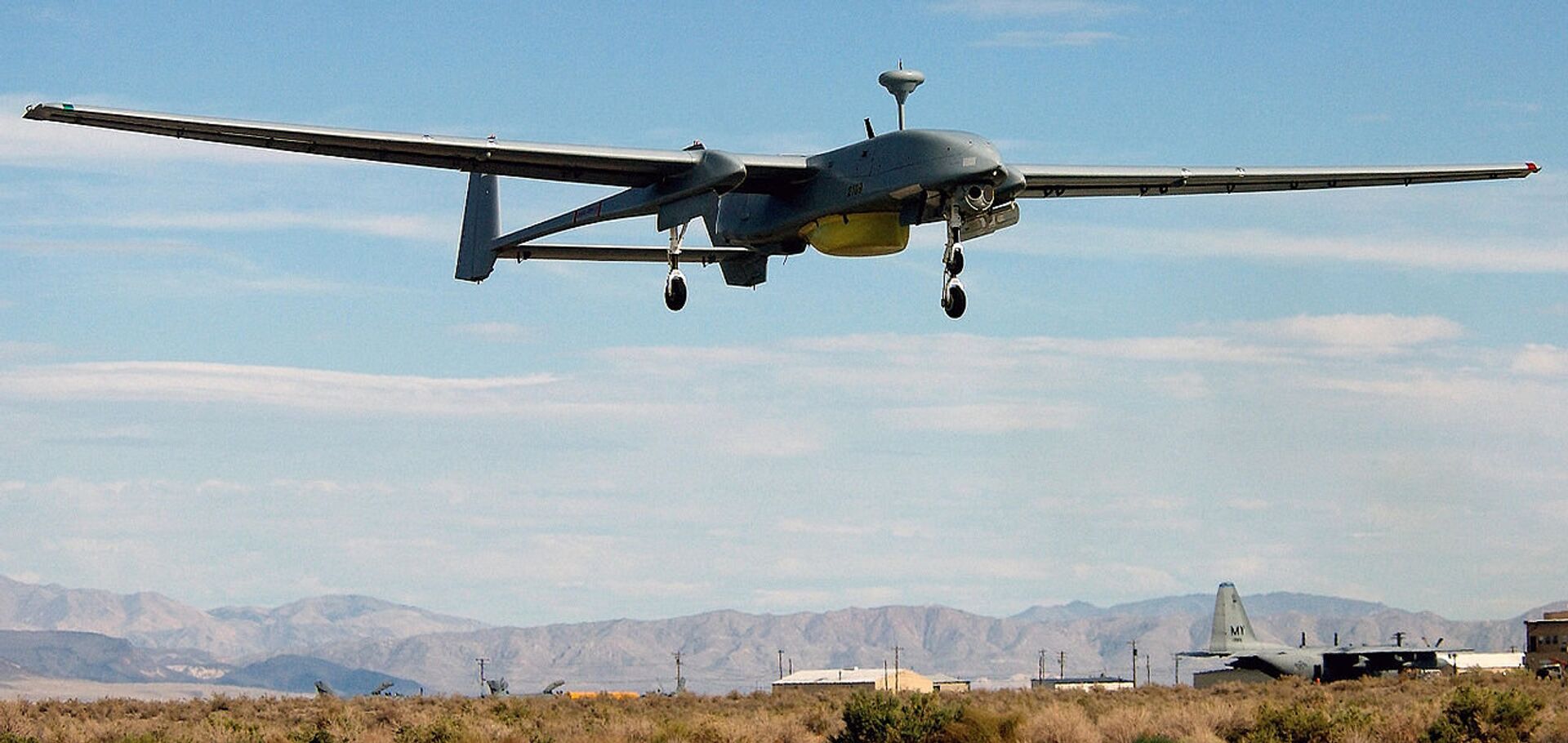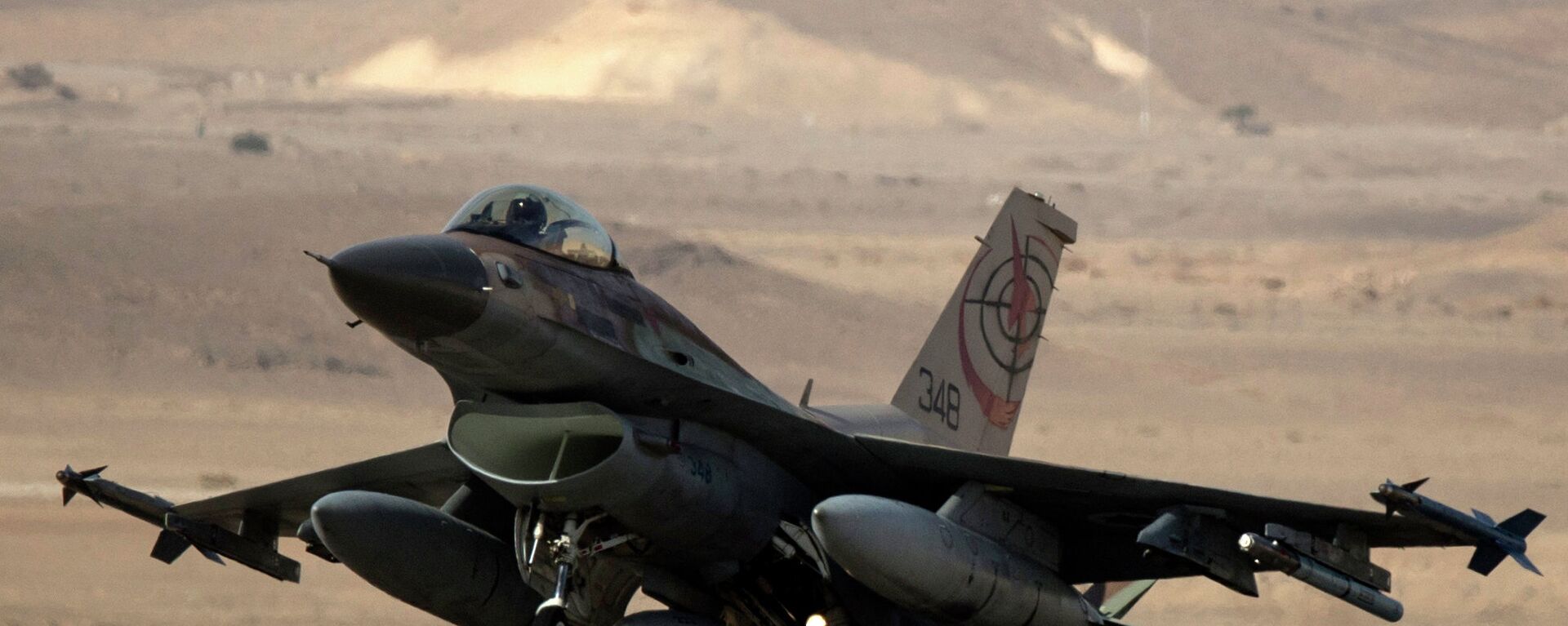https://sputnikglobe.com/20220720/idf-publicly-discloses-its-well-known-use-of-attack-drones-in-offensive-strikes---1097635868.html
IDF Publicly Discloses Its Well-Known Use of Attack Drones in Offensive Strikes
IDF Publicly Discloses Its Well-Known Use of Attack Drones in Offensive Strikes
Sputnik International
Until now, Israel’s military has refrained from disclosing its use of attack drones, and Israelis who have attempted to report on the state’s weaponization of... 20.07.2022, Sputnik International
2022-07-20T23:13+0000
2022-07-20T23:13+0000
2023-01-15T17:26+0000
iaf
2006 lebanon war
2014 gaza war
israel defense forces (idf)
tel aviv
hezbollah
middle east
drones
drone attack
barak 8
https://cdn1.img.sputnikglobe.com/img/103299/99/1032999942_0:86:3417:2008_1920x0_80_0_0_3265e1a2f36e3dbd5bef3dd7f9c733a8.jpg
After nearly a decade of secrecy, the IDF’s Military Censor has come clean about its long-known use of armed drones to strike hostile targets.The decision came as a result of an “in-depth and topical” review on the disclosure. No further explanation or reasoning was provided for the IDF’s change in policy.Related reports on Israel’s armed drone use date back to the 2006 Lebanon War.The IDF’s deployment of armed and unarmed drones has drastically increased within the past decade, as squadrons flown by the Israeli Air Force (IAF) can be assigned to a range of missions, including enemy surveillance operations, efforts to trace weapons smuggling, and neutralizing adversarial threats.Drone squadrons are responsible for about 80% of all IAF flight hours.The IDF is known to have several attack-capable drones, such as the Shoval (Heron 900), the Eitan (Heron TP), and the Zik (Elbit Hermes 450), a medium-sized multi-payload unmanned aerial vehicle that has a cruise speed of 80 miles/hour (130 kilometers/hour) and a performance range of 190 miles (300 kilometers).The Hermes 450 can be equipped with a range of payload options, like synthetic-aperture radar/ground-moving target indication, electronic warfare, communications, electronic intelligence, and hyperspectral sensors.The Shoval, a medium-size, multi-payload, medium-altitude long-endurance UAV, is capable of flying for up to 45 hours at a time, with a maximum altitude of some 35,000 feet (10,668 meters). The reconnaissance-ready aircraft has an operational range of more than 620 miles (1,000 kilometers).The Eitan, notably deployed during the 2008 and 2014 Gaza Wars, is a newer version of the Israeli Aerospace Industries’ Heron and is capable of flying up to 4,660 miles (7,500 kilometers) while relaying precise information. The aircraft comes equipped with satellite data link and electro-optical infrared sensors that allow the aircraft to compile movement profiles and attack adversarial ground targets.The announcement comes on the heels of the IDF’s downing of an alleged Hezbollah drone that crossed into Israel via the Lebanon border earlier this week.The unarmed, unmanned aerial vehicle (UAV) was monitored by IAF air control units and is assumed to be part of a Hezbollah propaganda effort over the Karish gas rig, the Jerusalem Post reported, citing military officials.Hezbollah Secretary-General Hassan Nasralla has floated the use of force to block the site from producing natural gas.Prior to the incident, the IDF struck down three additional UAVs that were said to be launched by Hezbollah forces toward Israel’s economic waters over the Mediterranean Sea.One of the three targets was downed by an F-16, while the other two UAVs were hit by the Israeli-made Barak-8 MR-SAM system.
https://sputnikglobe.com/20220712/us-claims-iran-plans-to-supply-russian-forces-with-weapons-capable-drones-1097208550.html
https://sputnikglobe.com/20220702/idf-shoots-down-three-hezbollah-drones-launched-towards-karish-gas-field-1096895335.html
tel aviv
israel
Sputnik International
feedback@sputniknews.com
+74956456601
MIA „Rosiya Segodnya“
2022
News
en_EN
Sputnik International
feedback@sputniknews.com
+74956456601
MIA „Rosiya Segodnya“
Sputnik International
feedback@sputniknews.com
+74956456601
MIA „Rosiya Segodnya“
iaf, 2006 lebanon war, 2014 gaza war, israel defense forces (idf), tel aviv, hezbollah, middle east, drones, drone attack, barak 8, heron tp, reconnaissance aircraft, israel
iaf, 2006 lebanon war, 2014 gaza war, israel defense forces (idf), tel aviv, hezbollah, middle east, drones, drone attack, barak 8, heron tp, reconnaissance aircraft, israel
IDF Publicly Discloses Its Well-Known Use of Attack Drones in Offensive Strikes
23:13 GMT 20.07.2022 (Updated: 17:26 GMT 15.01.2023) Until now, Israel’s military has refrained from disclosing its use of attack drones, and Israelis who have attempted to report on the state’s weaponization of armed drones have been promptly met with the threat of the Israel Defense Forces’ (IDF) censor.
After nearly a decade of secrecy, the IDF’s Military Censor has come clean about its long-known use of armed drones to strike hostile targets.
“It was found that there is no impediment in publishing the IDF’s use of strike UAVs as part of its operational activities,” read the Military Censor statement published on Wednesday,
per the Times of Israel. The decision came as a result of an “in-depth and topical” review on the disclosure. No further explanation or reasoning was provided for the IDF’s change in policy.
Related reports on Israel’s armed drone use date back to the 2006 Lebanon War.
The IDF’s deployment of armed and unarmed drones has drastically increased within the past decade, as squadrons flown by the Israeli Air Force (IAF) can be assigned to a range of missions, including enemy surveillance operations, efforts to trace weapons smuggling, and neutralizing adversarial threats.
Drone squadrons are responsible for about 80% of all IAF flight hours.
The IDF is known to have several attack-capable drones, such as the
Shoval (Heron 900), the
Eitan (Heron TP), and the
Zik (Elbit Hermes 450), a medium-sized multi-payload unmanned aerial vehicle that has a cruise speed of
80 miles/hour (130 kilometers/hour) and a performance range of
190 miles (300 kilometers).
The Hermes 450 can be equipped with a range of payload options, like synthetic-aperture radar/ground-moving target indication, electronic warfare, communications, electronic intelligence, and hyperspectral sensors.
The Shoval, a medium-size, multi-payload, medium-altitude long-endurance UAV, is capable of flying for up to 45 hours at a time, with a maximum altitude of some 35,000 feet (10,668 meters).
The reconnaissance-ready aircraft has an operational range of more than 620 miles (1,000 kilometers).
The Eitan, notably deployed during the 2008 and 2014 Gaza Wars, is a newer version of the Israeli Aerospace Industries’ Heron and is capable of flying up to 4,660 miles (7,500 kilometers) while relaying precise information.
The aircraft comes equipped with satellite data link and electro-optical infrared sensors that allow the aircraft to compile movement profiles and attack adversarial ground targets.
The announcement comes on the heels of the IDF’s downing of an alleged Hezbollah drone that crossed into Israel via the Lebanon border earlier this week.
The unarmed, unmanned aerial vehicle (UAV) was monitored by IAF air control units and is assumed to be part of a Hezbollah propaganda effort over the Karish gas rig,
the Jerusalem Post reported, citing military officials.
Hezbollah Secretary-General Hassan Nasralla has floated the use of force to block the site from producing natural gas.
Prior to the incident, the IDF struck down three additional UAVs that were said to be launched by Hezbollah forces toward Israel’s economic waters over the Mediterranean Sea.
One of the three targets was downed by an F-16, while the other two UAVs were hit by the Israeli-made Barak-8 MR-SAM system.






